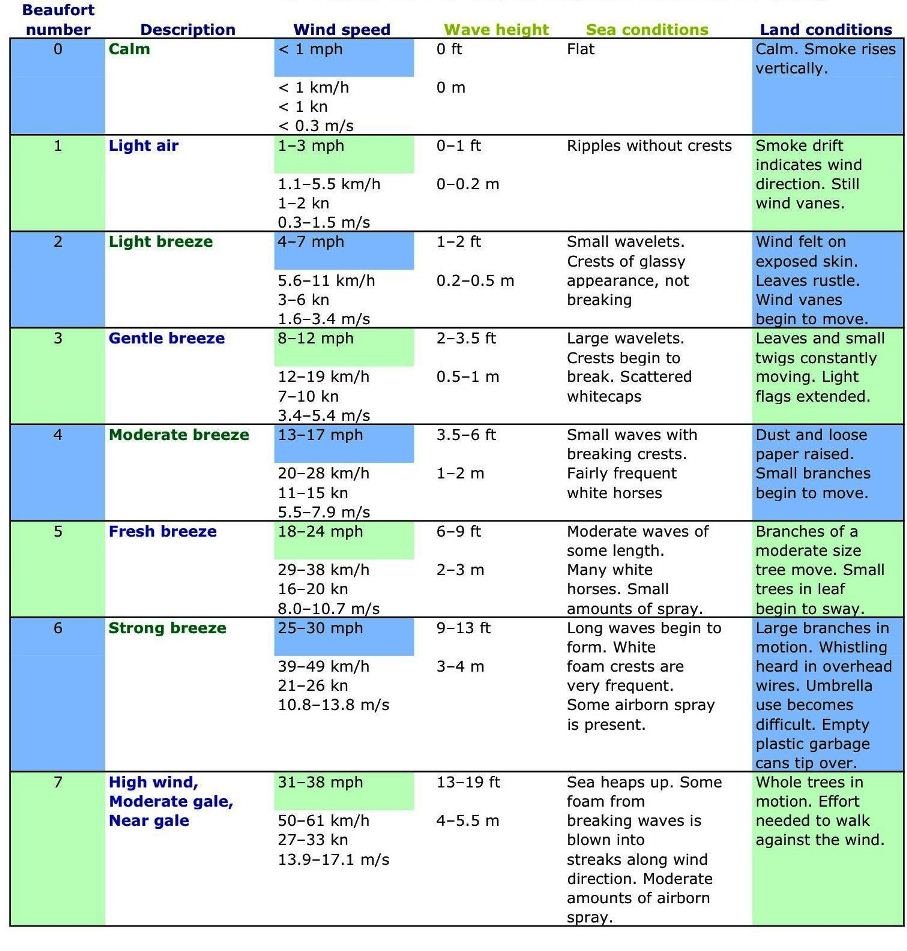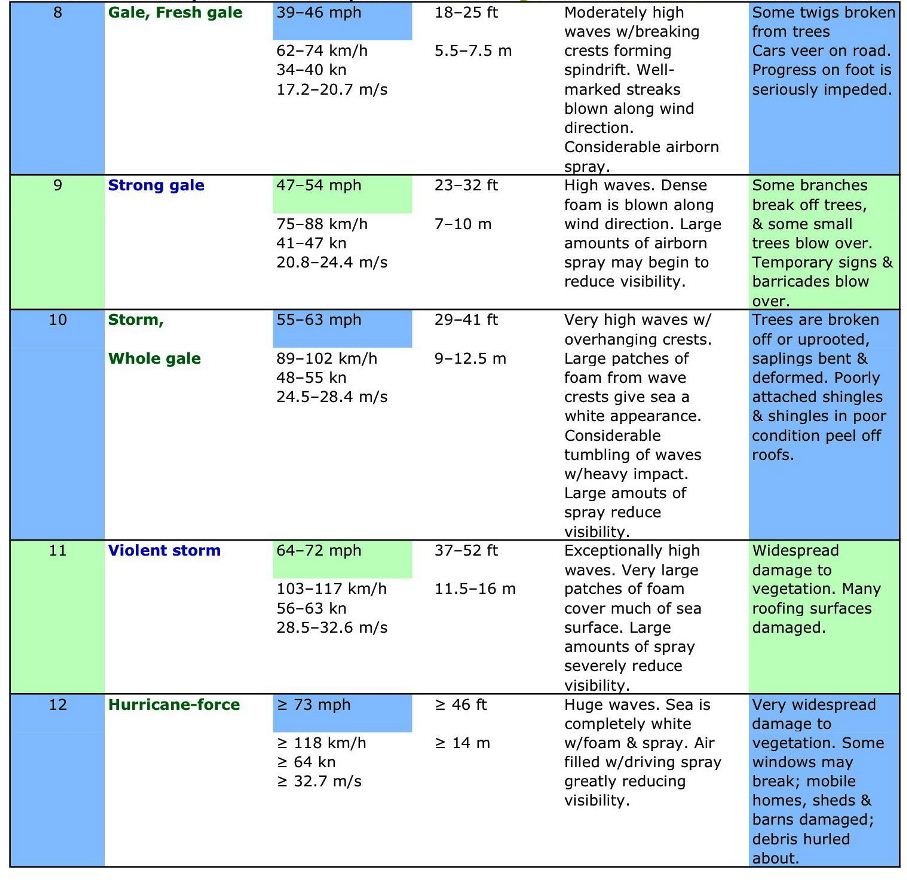The scale was created in 1805 by Sir Francis Beaufort, a British naval officer and hydrographer. At that time naval officers made regular weather observations, but there was no scale and so they could be very subjective – one man’s “stiff breeze” might be another’s “calm conditions”.
The initial scale from zero to 12 did not reference wind speed numbers, but related qualitative wind conditions to effects on the sails of a man of war, then the main ship of the Royal Navy, from “just sufficient to give steerage” to “that which no canvas [sails] could withstand.”
The scale was made a standard for ship’s log entries on Royal Navy vessels in the late 1830s. The scale was adapted to non-naval use from the 1850s, with scale numbers corresponding to cup anemometer rotations. In 1906, with the advent of steam power, the descriptions were changed to how the sea, not the sails, behaved and extended to land observations.
Rotations to scale numbers were standardised only in 1923. George Simpson, Director of the UK Meteorological Office, was responsible for this and for the addition of the land-based descriptors. The measure was slightly altered some decades later to improve its utility for meteorologists. Wind speed on the Beaufort scale can be expressed by the formula:
vv = 0.837 B3/2 m/s


If you enjoyed reading this, the please explore our other articles below:



